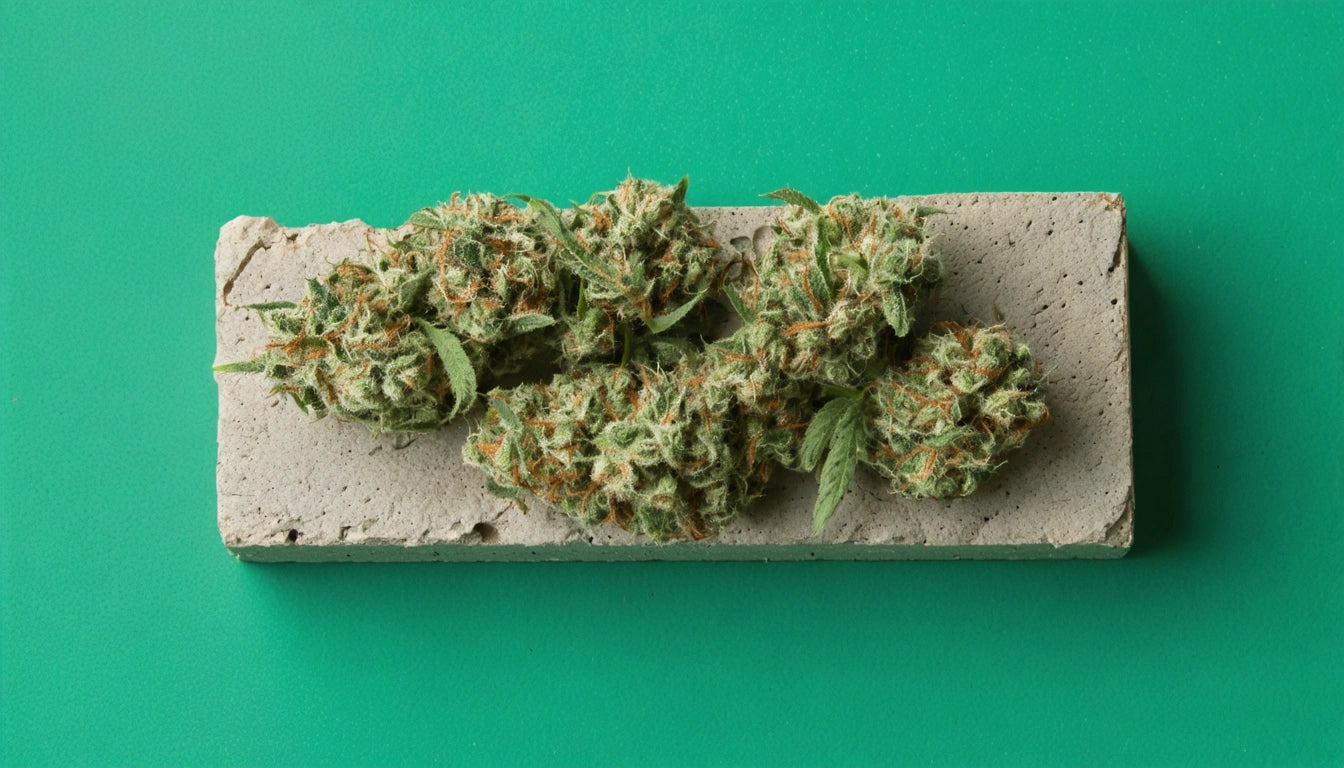Table of Contents
Understanding Brick Weed: Quantity, Cost, and Definition
In cannabis terminology, few formats have as much historical significance as brick weed. This compressed form of cannabis has been a mainstay in illicit markets for decades, though its prevalence has diminished with legalization. Understanding what brick weed is, its typical weight, and associated costs provides insight into both cannabis history and current market dynamics.
What is Brick Weed? Definition and Origins
Brick weed refers to cannabis that has been compressed into dense, rectangular blocks primarily for easier transportation and concealment. This format became popular among smugglers moving large quantities across borders, particularly from Mexico and South America into the United States during the 1970s through the early 2000s.
Unlike the carefully cultivated and preserved cannabis flower found in today's dispensaries, brick weed is typically compressed using hydraulic presses, often damaging the trichomes and compromising quality. The compression process frequently includes the entire plant material, including stems and seeds, rather than just the valuable flower portions.
Weight and Quantity: How Much Weed is in a Brick?
The question of how much weed is in a brick varies somewhat, but standard brick sizes have emerged over time. According to common weight standards, a typical brick of weed weighs approximately:
- 1 kilogram (2.2 pounds)
- Roughly 1000 grams
- Equivalent to about 35.27 ounces
Some smaller variations exist, with half-bricks weighing around 500 grams. The compression allows for significant density, with a full brick often measuring approximately 8" × 5" × 2" (20cm × 12.5cm × 5cm), though dimensions can vary based on compression methods.
Breaking Down a Brick
When distributed through the supply chain, a brick is typically broken down into smaller units:
- 1 brick (1000g) = 2.2 pounds
- 1 pound = approximately 16 ounces
- 1 ounce = 28 grams
This breakdown helps explain why brick weed was historically sold in various weights, from pounds down to individual grams, as detailed in this comprehensive guide to cannabis quantities.
Cost Factors: How Much for a Brick of Weed?
The cost of a brick of weed varies dramatically based on several factors. Historical pricing for a full kilogram brick has ranged from $500 to $2,000, depending on:
- Geographic location and proximity to source
- Quality of the cannabis
- Current market supply and demand
- Legal risk involved in the specific region
- Strength of law enforcement presence
In regions closer to production areas, prices typically trend lower. For example, states bordering Mexico historically saw lower brick prices than those in the northeastern United States, where transportation risks and distances increased costs substantially.
Modern legal markets have dramatically changed pricing dynamics. As this guide on cannabis costs explains, legal market prices are now determined by different factors, including production costs, testing requirements, and tax structures.
Quality Concerns and Health Considerations
Brick weed is generally considered lower quality than uncompressed cannabis for several reasons:
- Compression damages trichomes, reducing potency
- Extended storage and transportation time degrades cannabinoids
- Higher likelihood of contamination with mold, pesticides, or other substances
- Inclusion of stems, seeds, and non-psychoactive plant material
Health concerns associated with brick weed include potential exposure to harmful contaminants. The unregulated nature of illicit production means no safety testing occurs, unlike legal cannabis which undergoes rigorous testing. Safety concerns extend to packaging as well, with legal markets requiring secure child-resistant packaging solutions to prevent accidental ingestion, a standard completely absent in brick weed distribution.
Legal Implications and Risks
What is a brick in drugs terminology often relates to large-quantity trafficking, which carries severe legal penalties. Possession of a full brick of cannabis can result in:
- Federal trafficking charges
- Mandatory minimum sentences
- Asset forfeiture
- Immigration consequences for non-citizens
Even in states with legalized cannabis, possession limits are typically capped far below brick quantities. As outlined in this guide to legal possession limits, most states permit only 1-2 ounces for personal possession, making brick quantities illegal even in recreational states.
Modern Alternatives to Compressed Cannabis
The legal cannabis industry has largely moved away from brick format entirely, focusing instead on preserving trichomes and terpenes through careful cultivation, harvesting, and curing processes. Modern alternatives include:
- Carefully trimmed and cured flower sold in sealed containers
- Concentrates extracted using sophisticated methods
- Edibles with precise dosing
- Vape products with controlled formulations
These products prioritize quality control, accurate dosing, and consumer safety. They undergo testing for potency and contaminants, with results often available to consumers through QR codes or batch numbers.
While brick weed represented an era of cannabis distribution focused on quantity and concealment, today's legal market emphasizes quality, safety, and consistent experiences. Understanding this history provides context for the dramatic improvements in cannabis quality and safety that have accompanied legalization efforts across the country.











Leave a comment
All comments are moderated before being published.
This site is protected by hCaptcha and the hCaptcha Privacy Policy and Terms of Service apply.